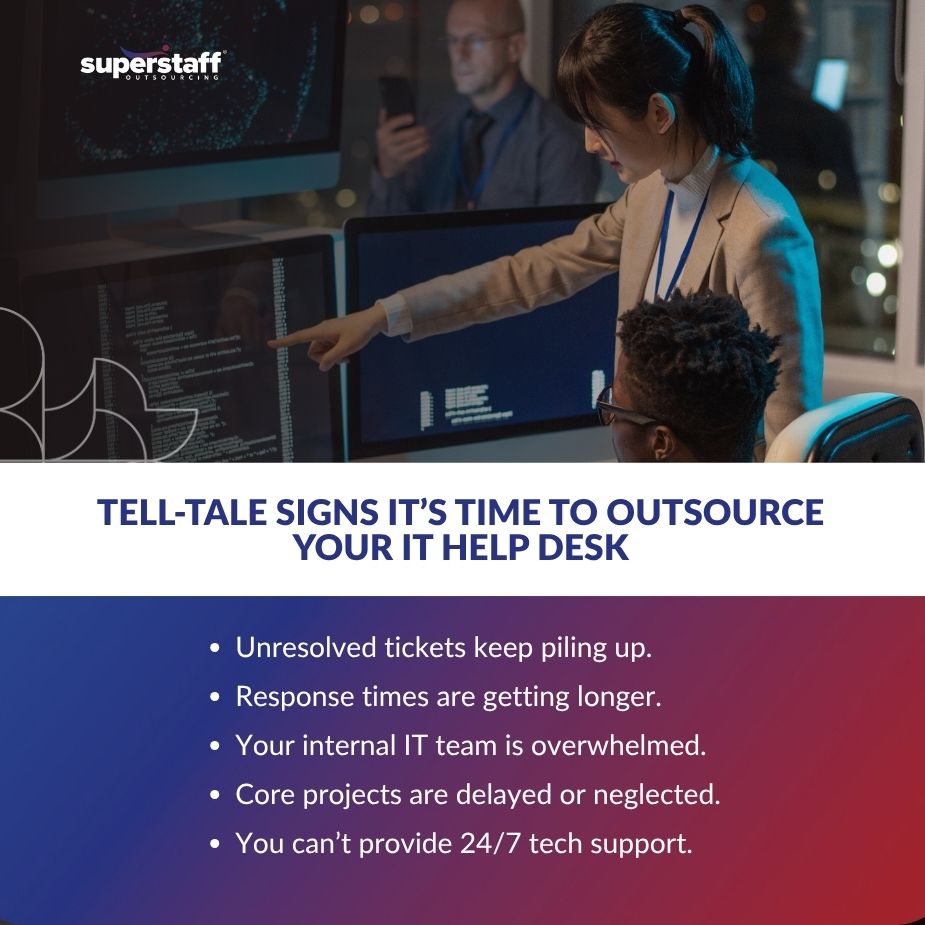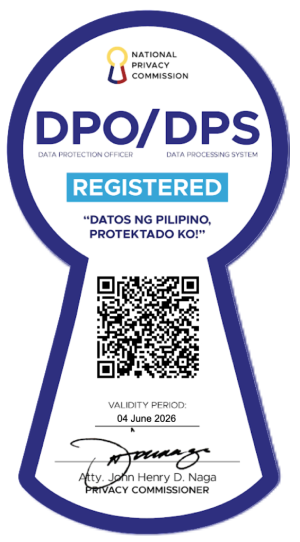
Your internal IT team is brilliant—no question about it. But are they spending their valuable time resetting passwords, fixing printer issues, and handling minor troubleshooting tickets? If so, you’re not alone. Many growing businesses find their tech talent tied up in routine support tasks, leaving little room for high-impact projects like digital transformation, cybersecurity upgrades, or infrastructure scaling.
As organizations expand, the demands on internal IT service desk solutions often outpace resources. What begins as a manageable support load can quickly evolve into a constant stream of user requests, pulling skilled professionals away from strategic work. This imbalance not only affects IT performance—it can stall innovation, reduce employee satisfaction, and slow overall business growth.
In this blog, we’ll break down the telltale signs that it’s time to consider outsourcing IT service desk solutions. We’ll also explore the tangible benefits of bringing in external support, from boosting efficiency and scalability to enabling your core IT team to focus on what they do best: driving real business impact.
Whether you’re a startup scaling fast or an established company rethinking operations, understanding when to outsource your IT help desk can give your business the edge it needs. Let’s dive in.
Understanding the Role of Remote IT Support
Before deciding whether to outsource, it’s important to understand what the help desk should be doing—and what it shouldn’t.
Your IT help desk serves as the first point of contact for employees experiencing technical issues. A well-functioning help desk ensures productivity, minimizes downtime, and supports a positive user experience. But not all support requests are created equal, which is why help desk responsibilities are typically divided into tiers:
- Tier 0 (Self-Service): Includes FAQs, knowledge bases, and automated bots. No human interaction is required.
- Tier 1: Frontline support for common issues like password resets, software login problems, and general user assistance.
- Tier 2: More in-depth troubleshooting for hardware failures, system errors, and escalated software issues.
Some of the typical tasks handled by an internal help desk include:
- Password resets, software troubleshooting, and basic hardware support.
- Managing ticketing systems and escalation workflows to ensure timely resolution.
- Supporting internal tools such as CRMs, communication platforms, and employee portals.
- Enhancing the user experience by resolving issues efficiently and proactively.
While handling these tasks is essential, they can consume a disproportionate amount of your IT team’s time. Skilled tech professionals should ideally focus on high-impact initiatives like system upgrades, cybersecurity, and innovation—not printer connectivity issues.
Now, let’s look at the warning signs that your internal setup might be holding you back.
Signs It’s Time to Outsource IT Service Desk Solutions
Certain red flags indicate it might be time to consider external help desk support.
Many businesses begin with the best intentions: a small but mighty internal IT team that handles everything in-house. But as operations scale, that model can quickly buckle under pressure. Here are some common pain points:
- Backlogs of unresolved tickets and long response times: When tickets pile up, response times slow down. This leads to frustrated employees, decreased productivity, and a negative internal reputation for IT support.
- Overloaded internal IT teams unable to focus on core projects: Instead of working on strategic initiatives like cybersecurity upgrades or infrastructure improvements, your team spends their days fielding repetitive support requests.
- Inability to provide 24/7 or multilingual support: As your customer base or employee footprint expands across regions, round-the-clock support becomes critical. Most internal teams aren’t equipped to handle off-hour or multilingual tickets.
- Scaling challenges during rapid growth or product rollouts: Adding new hires or launching products often leads to a spike in support needs. Without a scalable model, your existing help desk may become a bottleneck.
So, what does an outsourced help desk solution offer that in-house teams often struggle to provide?

What Outsourcing Your IT Help Desk Really Means
Outsourced IT support is more than just offloading tasks—it’s gaining a partner in tech enablement.
A third-party provider of IT service desk solutions isn’t just a vendor; they become an extension of your tech team. They bring structure, specialization, and scale, often more efficiently than internal operations. Here’s how:
- Access to certified IT professionals across time zones: Outsourcing gives you access to a global talent pool of trained and certified professionals who can resolve issues around the clock.
- Tiered support with escalation protocols built-in: Providers follow structured workflows to resolve Tier 1 and Tier 2 issues effectively, escalating only when necessary.
- Integrated platforms (ticketing, remote desktop, knowledge base): Most providers come equipped with tools that streamline support, enhance user experience, and provide transparency into performance metrics.
- SLA-backed performance and accountability: Service level agreements ensure consistent, measurable outcomes—something harder to enforce internally.
But the benefits go beyond just tech support.
Strategic Advantages of Outsourcing IT Support
Outsourcing IT service desk solutions can unlock long-term strategic gains.
When executed properly, IT help desk outsourcing isn’t just a cost-saving measure. It creates a ripple effect across your organization, enabling:
- Internal teams to focus on digital transformation and innovation: With routine support handled externally, your internal IT team can prioritize strategic initiatives that drive growth.
- Consistent service quality across geographies: Whether your employees are in Manila, New York, or London, an outsourced provider ensures the same level of support quality.
- Easier cost forecasting with predictable pricing: Outsourcing models often offer flat-rate or usage-based pricing, helping CFOs budget more accurately.
- Faster onboarding and deployment during scaling: Whether you’re hiring 10 or 100 employees, an outsourced help desk can ramp up support with minimal friction.
So, how can you evaluate if outsourcing is right for your specific needs?
Key Questions to Ask Before Opting for Outsourced Tech Support
Outsourcing isn’t an all-or-nothing decision—use these questions to guide your evaluation.
Before reaching out to a provider, conduct a self-assessment:
- What are our average ticket volumes and resolution times? High volumes and long wait times often signal the need for external support.
- Are our internal IT teams stretched thin or misaligned with strategic goals? If routine tasks prevent progress on business-critical initiatives, outsourcing can restore balance.
- Do we need round-the-clock support or multilingual capabilities? If your operations span time zones or require diverse language support, outsourcing offers immediate scalability.
- Are we prepared to scale tech support in the next 6–12 months? Growth plans should align with support capabilities—outsourcing can offer flexible ramp-up models.
These questions help clarify whether outsourcing is a tactical necessity or a strategic opportunity for your business.
Once these questions are answered, you’ll be ready to take the next step.
Partner With SuperStaff for Efficient IT Service Desk Solutions
Knowing when to outsource your IT help desk is about recognizing limits—and opportunities for smarter growth.
Your internal IT team is invaluable, but they shouldn’t be bogged down by repetitive support tasks. Outsourcing empowers your organization with scalable, specialized, and around-the-clock support while freeing internal teams to focus on what truly moves the needle.
If you’re noticing growing pains in your tech support process, it might be time to consider outsourcing as a way forward.
Ready to explore a more efficient IT support model? SuperStaff offers flexible, secure, and expert-led IT help desk solutions—tailored to your business. Let’s talk about how we can support your goals and scale with your growth.






